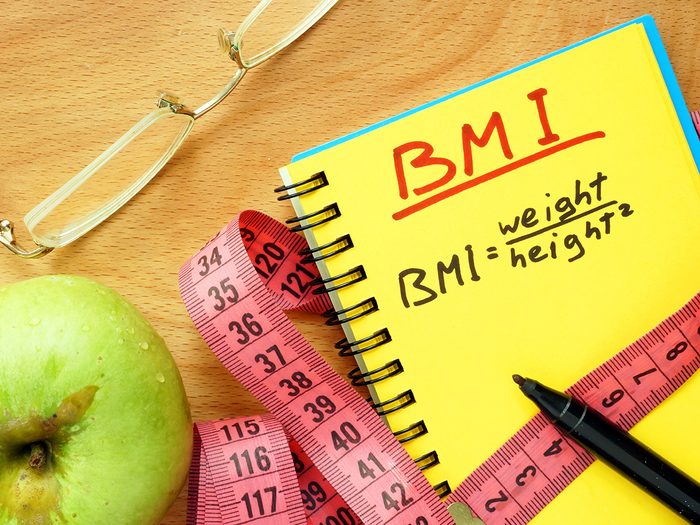Why Body Mass Index Isn’t the Best Measure of Health

Although the metric can predict health risk for some, BMI is nearly useless for many people.
Why Do We Measure BMI?
Body mass index is a metric designed to measure a person’s health status based on their weight. Although widely used, its usefulness has been increasingly called into question.
Here’s how it works: you divide your body weight (in kilograms) by your height (in metres squared). If the number you get is between 18.5 and 25, you’re considered to be at a healthy weight. Below this and you’re underweight, while above means you’re overweight or obese. BMI is used in doctors’ offices because it has no cost, is easy to calculate and can help identify risks for conditions affected by body weight, including heart disease, high blood pressure or cholesterol, sleep apnea and diabetes.
How is BMI problematic?
Although BMI cut-offs are accurate 80 per cent of the time across the world’s population, they’re most precise when measuring white men. The Quetelet Index, as BMI was first known, was formulated by Adolphe Quetelet, a 19th-century Belgian mathematician and astronomer. Quetelet used data from white European men to determine what an “average man” looked like—he never intended it as an assessment for individual health.
Dr. Sean Wharton, an internal medicine specialist in Toronto, believes healthy BMI ranges should be determined differently for different demographics. As just one example, a Stanford University study found that Black women were at risk of diabetes with a BMI of 33, whereas for white women, the cut-off is 29.
The other issue with BMI—one that touches every demographic—is that it can’t distinguish between fat and healthier sources of extra body weight. According to Dr. Fahad Razak, an internist at St. Michael’s Hospital in Toronto, a person who builds extra muscle at the gym might have a BMI that classifies them as overweight, but they’re not actually at risk of any weight-related conditions. Similarly, as people age, their bone density and muscle mass can decrease, while fat tissue can increase. They might stay at the same BMI, but since their body composition is changing, their risk may rise.
The inaccuracy of BMI doesn’t just distort health assessments—it can also have an adverse psychological impact. Studies have shown that when BMI is used to label a person as overweight, it can lead to the kind of negative body image that, rather than inspiring healthier living, creates low self-esteem and increases the risk of obesity.
What should we use instead?
There isn’t currently a solid alternative to BMI. Body-fat scales you can buy online purport to measure body-fat percentage, but they aren’t very accurate. They use bioelectric-impedance analysis—a process that runs a low grade electric current through the body and can differentiate between muscle and fat. While there’s evolving research on this method, it isn’t considered an accepted alternative to BMI, so it isn’t widely used in physicians’ offices.
Razak believes the BMI metric can still be useful as an indicator of most people’s health status, but it shouldn’t be the only one used—especially for anyone who isn’t a white male. For instance, he suggests looking at BMI in combination with waist circumference or waist-to-hip ratio, which can indicate when someone is building up too much fat in the midsection, disrupting organs and metabolism. Of course, even that measurement has to account for individual differences—and family history and lifestyle should always be taken into consideration by a doctor. “It’s not just a matter of looking at a person,” adds Wharton. “It’s listening, getting a fuller picture.”
Next, find out how stem cell therapy is saving lives.






